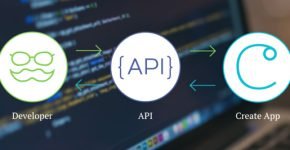Most Popular Java Frameworks You Should Know in 2022
We are near 2022 and as you can see Java is still one of the most popular programming languages in the world which is used for developing many kinds of software applications. Check this report for details. Earlier Java was most popular to create software and web applications but now Java is also being used to build Android mobile applications.
Let’s check the most used programming languages among developers worldwide, as of early 2019 as given by the Statista website. It shows Java is still the 5th most used programming language in the world.
Java comes with a vast ecosystem and you can easily Hire Java Developer as there are millions of Java developers working around the world. Due to the availability of so many libraries, microservices, REST API that run on the JVM and Java frameworks now you don’t have to write Java programs from the scratch.
In this article, we are going to give you a list of the most popular Java Frameworks. But before we start telling you about the list, let’s first understand what a “Web Framework” is. A web framework is a program that allows you to easily develop web applications without any need to write the basic functionality of the program. The framework denotes a system of structure that you can modify to easily develop new applications for specific software.
Hence, a web framework simplifies the whole building process and instead of having to write all of the complex code for software, you can simply use the framework to make specific changes, without having to rewrite all of the code.
That means if you use any popular Java framework, then you can focus more on writing the business logic of your app instead of writing the basic functionality such as making database connections or handling exceptions. Hence, if you have some knowledge and experience of using Java frameworks then you can get started quickly. Most of the Java frameworks use similar kinds of syntax, terms, paradigms, and concepts. They are easy to learn and used widely to build larger complex applications.
Let’s now discuss the list of most popular Java Frameworks 2022 which you should know.
GWT or Google Web Toolkit
Google has created GWT or Google Web Toolkit Framework. It is an open-source framework that enables you to easily develop and modify front-end Java applications even if they are too complex to build. As it has been developed by Google hence it has lots of support, lots of good documentation, and the entire framework is very professional and well developed.
GWT allows you to write client-side Java code and deploy it as JavaScript for the web browser. GWT is a stable and well-maintained Java framework. It has been used in several Google products like AdWords, Blogger, AdSense, Google Wallet, and more. GWT has a full-fledged website having all the tools and resources any developer may need like tutorials, developer guides, a starter application, and an Eclipse plugin.
The good thing about GWT is that using it you can write complex browser-based applications without any need to be an expert in front-end technologies like JavaScript optimization or responsive designing. GWT offers many other advanced features like cross-browser portability, internationalization, bookmarking, history management, and UI abstraction.
You Can Read Also Top Post
Spring Framework
Spring is an enterprise-level Java application framework that is one of the most popular Java frameworks today. It can be used to build many things including web, REST API, WebSocket, and more. Spring is highly developer-friendly and needs the least upfront configuration. Spring is a programming model that is built on top of the Java programming language.
Spring has a huge ecosystem and a vast active community around it. Using it you can build enterprise-level Java applications, microservices, and web services.
Spring framework was initially started as a dependency injection tool but soon it evolved into a full-scale application framework. It has a full-fledged programming and configuration model which supports many generic tasks like handling exceptions and establishing a database connection. Other than Java, you can also use it with Kotlin and Groovy, which run on the Java Virtual Machine or JVM.
This framework uses the inversion of control or IoC software design principle under which it controls the custom-written code which is different than that with conventional programming Hence, you can create loosely coupled modules for your applications using Spring.
Although Spring Framework is best for building enterprise-level Java applications it is a bit difficult to learn. This is due to it being a broad framework that wants to provide a solution for each and every task that is required in an enterprise-level application. It supports many different platforms. If you use Spring then you need to do configuration, setup, build, and deployment having multiple steps that you may not want to do in a smaller project.
Blade
Blade is a simple application framework with very little footprint. This framework was created in 2015. It is a simple and lightweight framework and most developers can understand it in a single day.
Blade lightweight MVC framework is based on Java 8 and provides a RESTful style routing interface, making the web API much cleaner and a lot easier to understand. It also supports the easy synchronization of data with the website.
The Blade framework follows the MVC (Model-View-Controller) software design process. It has a very easy-to-understand design and it doesn’t depend on any third-party libraries. Blade is based on Java 8 and Netty web server and template engine which are built into the framework itself. Its source code takes only 500KB of total space.
Blade has inbuilt security features as it comes with CSRF (Cross-Site Request Forgery) and XSS (Cross-site scripting) defense mechanism. This framework comes with support for plugin extensions and webjar resources. Blade supports simplicity and elegance and has good documentation.
Grails
Grails is a Groovy-based Java web application framework. A groovy programming language is an object-oriented programming language for the Java platform that aims to enhance developer productivity. It’s similar to Java and it is compiled to Java Virtual Machine or JVM bytecode.
While using Grails, you need to write source code in Groovy language but Grails works perfectly with most of the Java-related tools and technologies like Java Development Kit or JDK, Java EE containers, Spring, Hibernate, SiteMesh, and Quartz.
Actually, Grails is built on top of Spring Boot to make it use for its features which enhance productivity like Spring’s dependency injection. The good thing about Grails is that you can get the same results even if you write less code due to the power of Groovy language.
Grails is an open-source Java web development framework and is popularly known among Java developers for Enterprise Java Beans or EJB. Due to this, it doesn’t require to configure the XML, therefore, developers can quickly begin the development process to create highly scalable, robust and reliable applications.
Grails follow the latest software development principles like convention over configuration, opinionated APIs for best practices. It has detailed documentation, step by step guides and a plugin library at its website. Developers can also create their own plugins and make use of Grails’ IDE support for Sublime, Textmate, IntelliJ IDEA, Eclipse, and more such platforms.
Hibernate
Hibernate is a highly stable object-relational mapping Java framework for more efficient database communication as it makes the communication between the Java programming language and relational database management systems i.e. RDBMSs much easier and highly organized.
Hence, you can use Hibernate to communicate with any database which you are using with any need to do very fewer changes in the overall code of your web application. This is highly convenient if you are using multiple databases that may or may not be incompatible with each other. Other than giving good performance other benefit of Hibernate is that it is highly scalable whichever architecture of the software you are using and whatever be the number of users.
Hibernate works amazingly well for the developers who are designing a module of software which is going to be used by 10, 20 or even hundreds or thousands of users.
Other than these benefits, Hibernate is also easy to configure, customizable and you can do so many other things. The only drawback of Hibernate is when you need to start this ORM framework then it can take a bit of time to get back to where you were working.
Hibernate helps in removing the mismatch problem of Java. It also helps in achieving persistence behavior which means the data created during the application execution lives beyond the process that generated it. Although Hibernate was created for RDBMS but its latest versions provide support for NoSQL databases also. It also has amazing developer tools like Hibernate console, database reverse engineering tool, and mapping editor.
Conclusion
We have just discussed with you the top Java Frameworks which are used widely by Java developers around the world for creating easy as well as complex web applications. These frameworks have their own advantages and disadvantages. Hence, you should evaluate them before using them to start your Java project. You should choose that Java framework that requires less coding to build your application and which is easy to manage and use. Depending upon the size and complexity of the application you may like to use Grails or Hibernate.
If you do not want to devote your time to do research on which framework to use you can better hire a renowned software development company that provides quality development services. Make sure that they have an expert team of developers who can guide you while choosing the required framework to build your app.
To reduce cost most of today’s companies prefer to hire an offshore software development company to build their web applications. Good thing is that these companies not only provide quality software development services but also give valuable creative inputs in the development process of the software project. Hence, the mantra is quite simple. Use Java framework, hire smart developers, and excel in your business.












